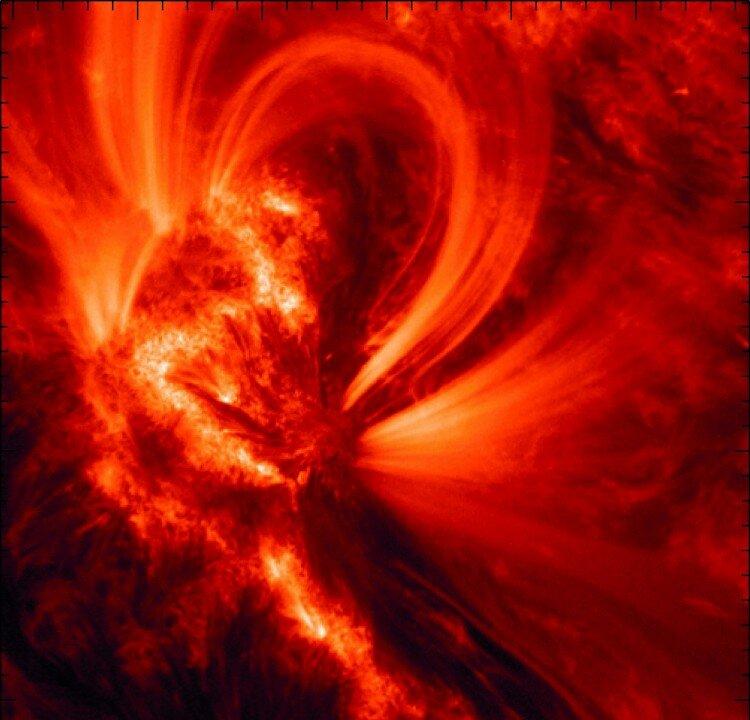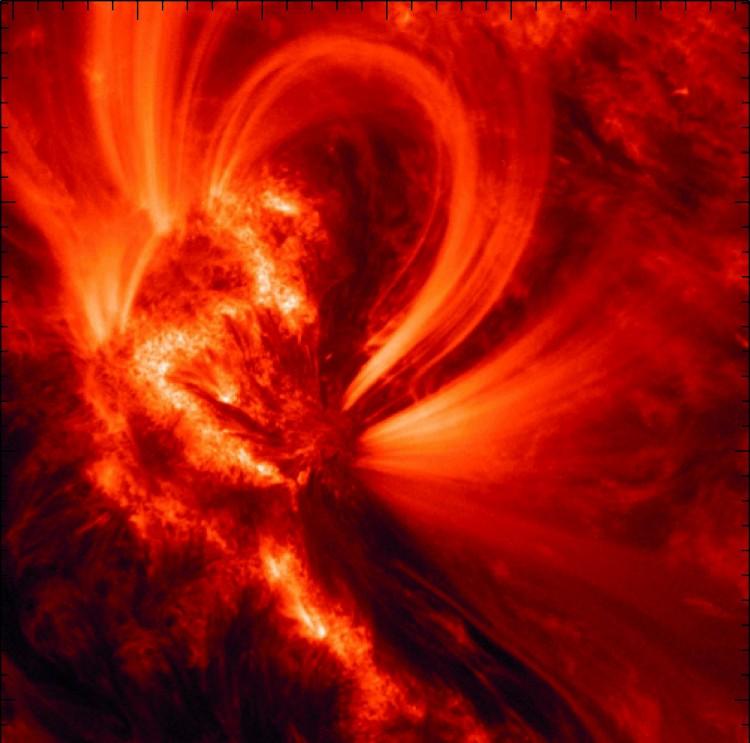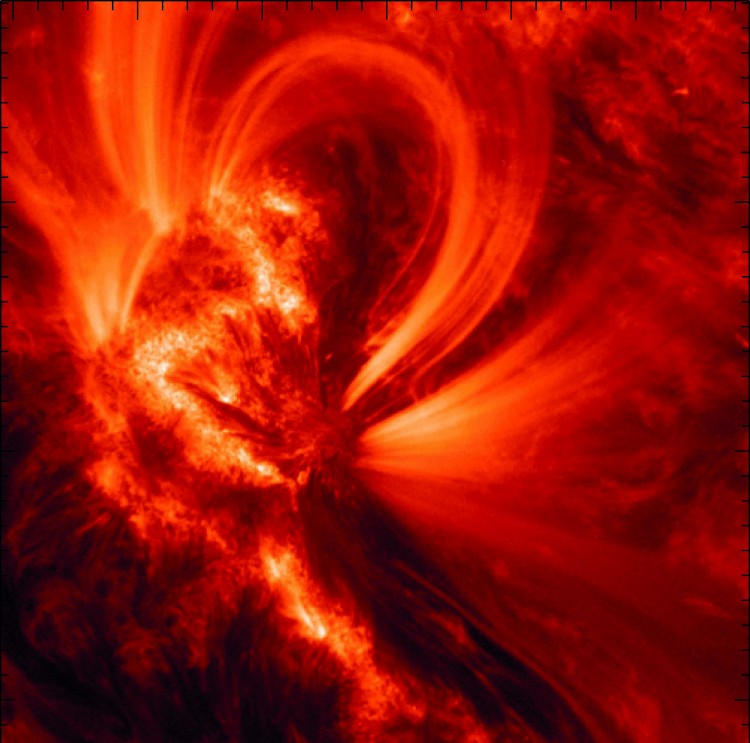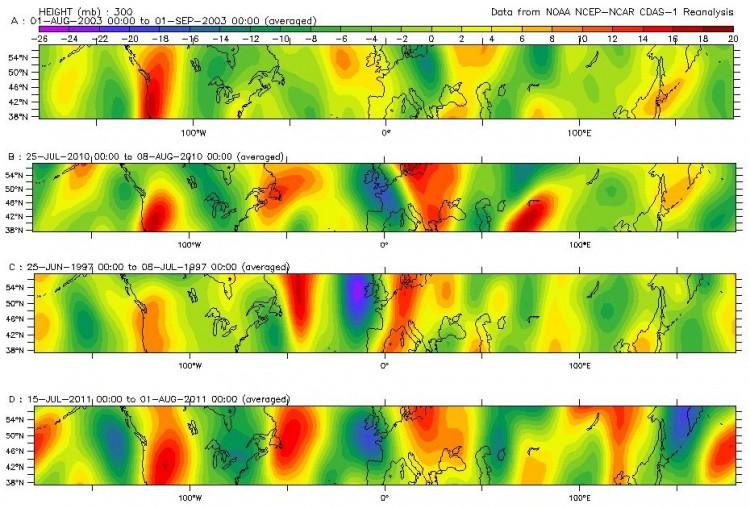The magnetic field mechanisms underlying heating in the sun’s active regions could help astrophysicists forecast extreme space weather and prevent damage to power grids on Earth and satellite communications.
As our sun approaches solar maximum, these sunspots can be observed producing flares and coronal mass ejections (CMEs) with spacecraft like the Hinode satellite and the Solar Dynamics Observatory (SDO).
An international study has visualized the movement of plasma or hot ionized gas in the sun’s coronal loops—structures which form in the upper solar atmosphere and are associated with these explosive events.
Using the extreme ultraviolet imaging spectrometer (EIS) on board Hinode, the researchers observed plasma upflows at around 20 km (12 miles) per second in the loops at 1 million degrees Kelvin.
The EIS produces a spectral signature known as a blueshift, which follows the movement of hot gas. It can also identify the elements present; the sun is composed mostly of hydrogen and helium, but includes trace elements like oxygen and iron.
The motion in the loops may be caused by “chromospheric evaporation” in which localized “impulsive heating” near their bases could produce heating of active regions, causing large-scale explosions.
“It is believed that magnetic energy builds up in an active region as the magnetic field becomes distorted, for example by motions below the surface of the sun dragging the magnetic fields around,” said study co-author Helen Mason at the University of Cambridge in a press release. “Sometimes magnetic flux can emerge or submerge and affect the overlying magnetic field.”
“We believe that solar plasma surges upwards when impulsive heating results from magnetic reconnection which occurs either in the loops or close to the sun’s surface,” she added. “These disruptions are sometimes relatively gentle but can also be catastrophic.”
The findings were published in Astrophysical Journal Letters today.
The Epoch Times publishes in 35 countries and in 19 languages. Subscribe to our e-newsletter.





